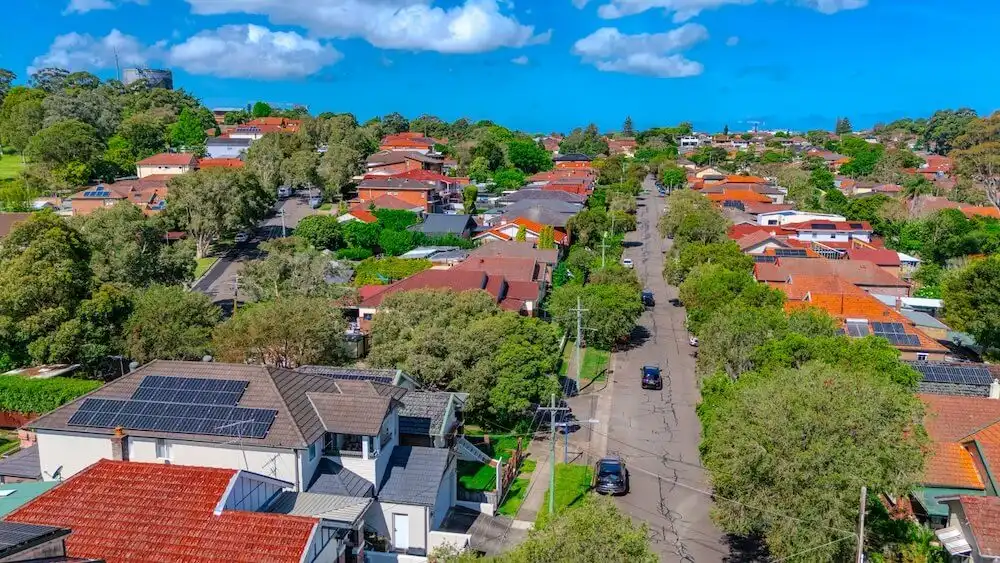How the second rate cut is affecting Australian property
After a bumpy 2024 that saw wildly varied performances across capital cities and regions, the Australian housing market has unified in 2025 thanks to easing inflation and interest rate cuts.
Since February, buyers have returned to the market with renewed confidence, and prices are rising Australia-wide. A second cash rate cut in May has only accelerated this momentum, paving the way for strong selling conditions.
Here’s what you need to know about how the market has reacted so far and what could be coming next.

Get a free property value estimate
Find out how much your property is worth in today’s market.
The first half of 2025 has delivered a major shift
The Reserve Bank of Australia (RBA) made its first move in February, cutting the cash rate to 4.10 per cent. The decision followed a steady decline in inflation, and it delivered a boost in buyer confidence, particularly in markets that had been most sensitive to the rate-hiking cycle.
Cotality (formerly CoreLogic) data showed that Sydney and Melbourne in particular responded rapidly to the rate cut. Sydney’s home values rose +0.6 per cent in February, then a strong +0.9 per cent in March. Melbourne also saw a clear turnaround with +0.3 per cent and +0.5 per cent growth in the same months.
Meanwhile, 2024 stars Brisbane and Adelaide remained consistently strong performers, while Perth and regional WA continued to lead the country.
Adding to the momentum, Labor’s decisive win at the federal election brought stability and continuity to the broader economic outlook, and demand-stimulating policies like the expanded Help to Buy scheme helped further support consumer sentiment.
Then, in May, the RBA delivered a second rate cut, bringing the cash rate to 3.85 per cent. This move came on the back of inflation landing squarely within the RBA’s target band for the first time in years.
What the May rate cut has meant for the market
While only a month has passed since the May cut, early indicators show the move has had a clear impact.
PropTrack’s Home Price Index for May revealed that national property prices rose +0.3 per cent for the month, pushing annual growth to +5.68 per cent. Prices climbed in every capital city, with Sydney up +0.45 per cent, Melbourne +0.21 per cent, Brisbane +0.41 per cent and Adelaide +0.35 per cent.
Cotality echoed the trend in its June report, with national home values up +0.8 per cent in May and all capital cities recording growth.
Tim Lawless, Cotality's research director, noted that "The continued momentum we're seeing across almost all markets is in no doubt being fuelled by rate cuts — both those that have already happened, but also potential cuts in the coming months."
Auction clearance rates also trended higher. Sydney recorded a 75.3 per cent preliminary clearance rate in the first week of June – its strongest in months. Melbourne hit 70.2 per cent. Both figures represent an increase of 5 to 8 percentage points compared to April.
On the listings front, there has been a clear lift in vendor activity. SQM Research reported a +5.4 per cent rise in new listings nationally in May, led by Sydney and Melbourne. This suggests sellers are beginning to take advantage of improved conditions.
But rising auction clearance rates and sales volumes rising "indicate the housing market is at present, recording more home buyers in the marketplace," SQM's Louis Christopher said.
"This, combined with ongoing low levels of dwelling completions, are all fuelling the conditions for a short-term surge in dwelling prices."
What’s next: Could this be the right time to sell?
With two rate cuts now behind us, attention has shifted to the second half of 2025. The big question is: will there be more cuts, and what will they mean for the market?
At the time of writing, financial markets are pricing in a third rate cut before the end of the year. If this comes to pass, it could provide another shot in the arm for buyer demand and lead to further price gains.
Forecasts from major banks are broadly optimistic, though a boom isn't expected. NAB is tipping national house prices to rise +3.3 per cent in 2025, with Westpac forecasting similar growth of +3.0 per cent.
But SQM's Louis Christopher sees stronger gains of around +10 per cent by the end of 2025, saying that "It is very likely housing prices will rise from here and continue into 2026."
Of course, not every market will move at the same pace. Perth and Adelaide have been extremely strong performers for some time and are likely to continue to steadily rise.
Sydney and Melbourne, after a slower 2024, are now building momentum. Regional markets are more mixed, but many are seeing renewed interest as affordability and lifestyle factors continue to appeal.
For sellers, this shift is worth paying attention to. After a lengthy stretch of mixed conditions around the country, we’re now seeing a more synchronised upswing. Buyer activity is rising, competition is heating up, and sentiment is improving.
That doesn’t mean you should rush to market, but it does suggest that the second half of 2025 could present a strong window to make a move – especially if borrowing becomes more affordable and listings remain tight.
As always, the best decision will depend on your own circumstances. But in terms of broader conditions, the tailwinds are becoming stronger.






